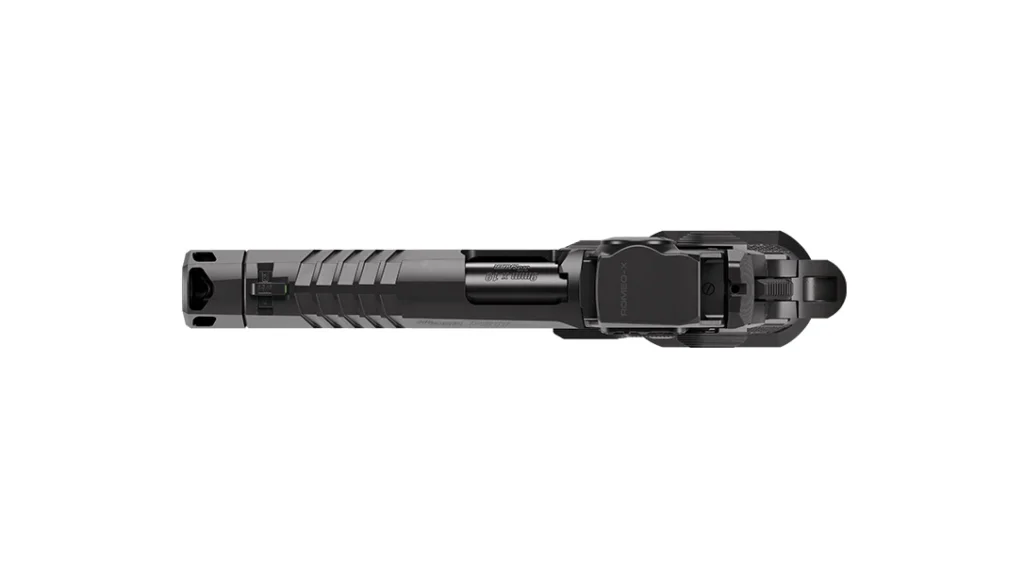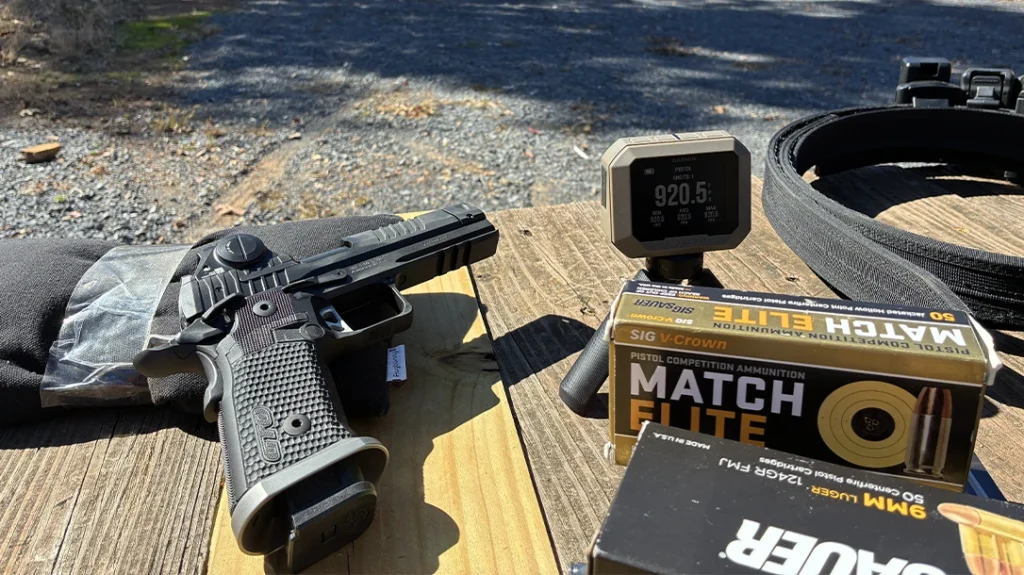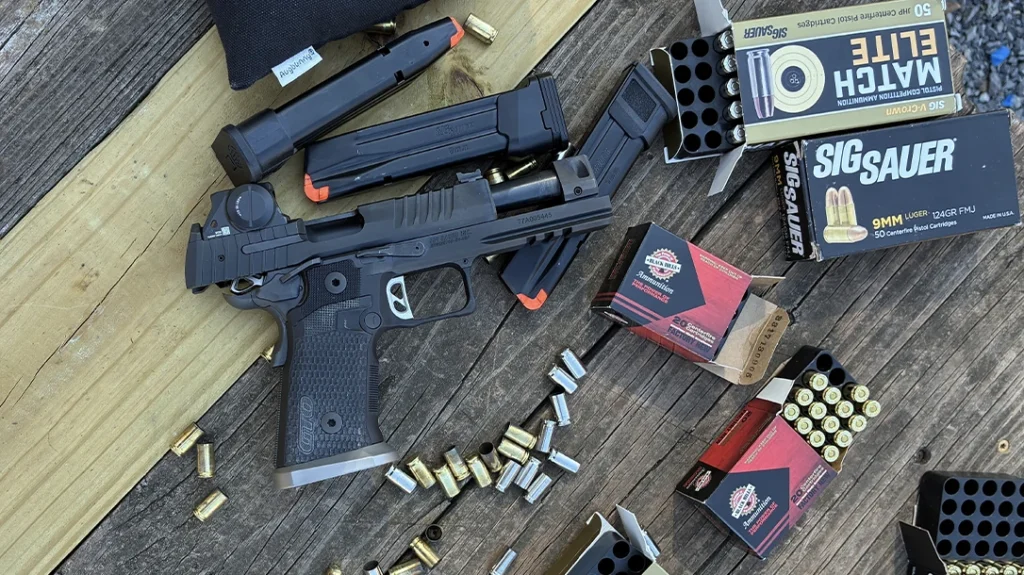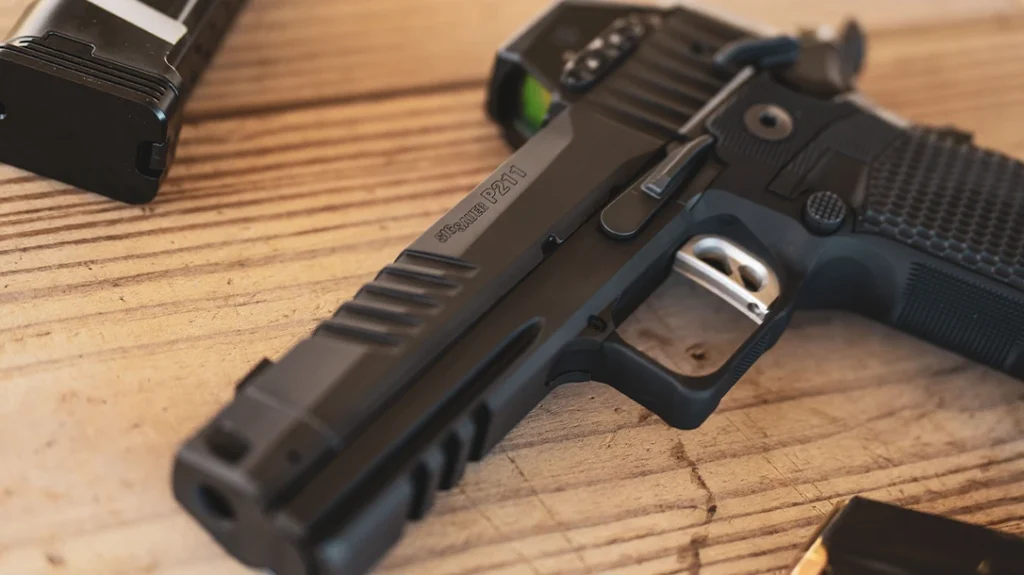You have to admit SIG Sauer has a knack for continually introducing new items that capture firearm consumers’ attention.
It launched the new SIG Sauer P211-GTO, this past June, for [an excellent] example. This gun is best described as the love-child between a SIG Sauer P320 Spectre Comp and a P226-X Legion SAO. In the end, the new P211-GTO fully embraces the double-stack 1911 genre–which is currently all the rage.
A Double-Stack, the SIG Way
Advertisement — Continue Reading Below
SIG refused to produce a rote double-stack 1911 copy when developing the P211-GTO. It’s immediately clear, because SIG’s DNA is all over the P211-GTO. Just look at its slide’s aesthetics. The slide has the same lines as a P320. And the gun even feeds from a P320 magazine.
An interview with a SIG handgun product manager at SIG’s NEXT event mentioned that the P211-GTO has been in the works for nearly two years. This manager emphasized that SIG’s engineers deeply studied how to improve the 9mm double-stack 1911 concept.
It’s also one of the reasons why SIG very deliberately included the P320 magazines in the development of the P211-GTO project. While traditional double-stack 1911 magazines have a history of being finicky, it’s hard to imagine a more vetted magazine than the P320 magazine. So adding it to the equation was an obvious no-brainer for SIG. It doesn’t hurt that P320 magazines can be easily found too.
Advertisement — Continue Reading Below
My research uncovered that SIG decided on using a Series 80 style 1911 trigger. This is a significant nuance because most double-stacks use a Series 70 trigger.
The Series 80 arrangement offers increased drop-safe characteristics over the Series 70. But the Series 80 firing pin block does not offer the same premium trigger press as the Series 70. SIG addressed this on the P211-GTO by polishing, tumbling and removing as much friction as possible within the P211’s trigger parts. I measured the trigger-pull weight on my sample with my Wheeler electronic trigger gauge. The creep-less trigger breaks with only 3.6 pounds of pressure. Likewise, its reset is very short. The end result is a very decent out of the box trigger on a production double-stack gun.
Alloy Grip Module & Futuristic Comps

Advertisement — Continue Reading Below
Two more “SIGgy” aspects of the P211-GTO lie in its alloy grip frame and Mach3D compensator. The P211-GTO’s alloy frame is attached to the steel frame using different methods in comparison to other double-stack 1911s on the market.
This contributes to the P211-GTO’s inherent robustness and reliability, especially when combined with the P320 magazine already mentioned. The removable Hogue G10 grip panels are another nice touch.
The Mach3D compensator benefits from SIG’s advanced work involving suppressors. During development, SIG even got MIT’s computing power involved in order to study gas flow and how best to manipulate it.
Advertisement — Continue Reading Below
With the design finalized, SIG used additive manufacturing (3D printing) to create a multi-dimensional compensator. The Mach3D redirects muzzle gases from its main port up top as well as from its sides. Inside the Mach3D, there’s a deflection chamber that modulates expanding gasses too.
LOCing In With The P211’s Grip & ROMEO-X Red-Dot

Thanks to its alloy grip module, the P211-GTO exudes a “steely” 1911 feel. It’s unlike your typical doubled-stack 1911, which is traditionally built with a polymer grip module. The other nice thing about the P211-GTO is that it doesn’t require hands the size of Andre the Giant to grip properly. There are only minor increases in width and front-to-back measurements in its grip.
Advertisement — Continue Reading Below
The P211-GTO arrived with a factory-installed SIG ROMEO-X SIG LOC Pro red-dot sight. This fully enclosed-emitter red-dot sight uses SIG’s relatively new “SIG LOC” mounting solution of military M17 SIG handgun fame.
The P211-GTO SIG-LOC is a new mounting footprint that establishes five points of contact between the slide and optic to eliminate shift in zero created by recoil and harsh impacts. The bottom-mounted design allows for a longer focal length that dramatically reduces parallax and reticle distortion to provide an incredibly forgiving shooting experience. The low deck-height of the SIG ROMEO-X SIG LOC is an ideal partner with a pistol like the P211-GTO. This means you don’t need to search for the dot when presenting the P211-GTO to the target.
Echoing Blasts Through The Valley
Advertisement — Continue Reading Below

I didn’t hold back when I took the SIG P211-GTO to Echo Valley Training Center, my home range. There, I verified zero, established my accuracy baseline and then proceeded to dump several magazines rapidly at various steel targets. Running the gun hot and fast this way quickly shows if any reliability issues exist. Honestly, if a pistol is not reliable, what good is it? Further testing consisted of participation in a monthly outlaw steel match held at EVTC. While certain P320 holsters will work with the P211-GTO, I ordered a specific P211-GTO holster from Black Scorpion gear for the match. I didn’t really have the best luck with standard “2011” holsters or P226 holsters.
I found the P211-GTO’s trigger, recoil impulse control, and accuracy impressive after taking my first shots off the bench while confirming zero. At 12-yards, my groups all consisted of jagged holes with SIG Match, SIG FMJ, SIG V-Crown, and Black Hills ammunition ranging from 115 grains to 147 grains in weight. Using the term “tack driver” is cliché, but it really fits in this case.
I found the P211-GTO’s single-action trigger to be an asset for both slow and rapid fire. It’s crisp and fast-resetting so sending multiple shots per string came easily.
The distinctive P320-looking top end contributes more mass, aiding in increased muzzle control for double taps or longer strings of fire. SIG ergonomics combined with the slide’s smooth tracking during recoil and manageable 9mm impulse all allowed for a very stable sight picture–no matter the cadence.
P211-GTO Manipulations & Quirks

The P211-GTO’s manual safeties are located within the user’s natural thumb swipe distance. I noticed that the slide-stop lever seems to sit slightly rearward compared to other double-stacks. It helps to speed up reloads. On that note, the magwell also plays a part in drawing in fresh P320 mags.
It pays to mind your hand placement when racking the slide. Do not grab too far forward on the slide near the Mach3D compensator. If not, you can inadvertently pinch yourself between the barrel and compensator.
Lastly, the magazine well on the P211-GTO does not work with standard basepad 17-round P320 magazines. Make sure you are using LEGION P320 magazines with rectangular aluminum basepads or 21-round or longer P320 magazines. For what it’s worth, the gun ships with two 21-round and one 23-round P320 magazines.
The P211-GTO In Perspective

I am blessed with extensive prior experience with various double-stack 1911s, which gave me a solid frame of reference when evaluating SIG P211-GTO. Honestly, nothing I can write will truly convey how smoothly the P211-GTO operates. Its trigger is above average. Only truly custom-tuned 2-pound competition triggers would be better.
With the SIG P211-GTO, it is not just the integral Mach3D compensator that defines the shooting experience. Yes, you can call the Mach3D compensator the P211-GTO’s “icing on the cake”, but the gun doesn’t need to rely on it to define the P211-GTO experience.
Effective shooting is not just about dealing with recoil. The slide returning to battery is also a factor impacting sight alignment and grip. It’s why professional shooters take the time to analyze different recoil spring weights during shooting sessions. You want enough spring weight to cycle the slide reliably, but not too much. The right spring smoothly returns the gun to battery. A spring too heavy causes the slide to slam forward, which makes the muzzle dip.
With that in mind, factor in the Mach3D. Most compensators mitigate muzzle flip by 30-40%. Don’t forget that muzzle flip reduces the speed with which you can accurately fire multiple rounds. A well-designed compensator allows for an easier job in firing the weapon under normal conditions as well as challenging conditions like competing or with shooting with one hand.
Overall the combination of a smooth-recoiling slide and compensator allows for an overall softer felt recoil impulse, helping you to keep follow-up shots on target.
The P211-GTO’s slide moves so fluidly that the ROMEO-X Pro dot almost just lingers in place during shooting. That is why premium weapons like the SIG P211-GTO stand out with superior ergonomics and performance.
You Can’t Buy Performance, But….

The SIG Sauer P211-GTO will make you feel as if you’ve reached the pinnacle of craftsmanship, design, reliability, and efficiency in the double-stack genre. While it is said you cannot purchase proficiency, the P211-GTO certainly feels like a worthy enhancement to existing skill.
You can sense that you perform better with this particular gun in hand compared to other handguns. There is no better compliment than this.
WHY OUR ARTICLES/REVIEWS DO NOT HAVE AFFILIATE LINKS
Affiliate links create a financial incentive for writers to promote certain products, which can lead to biased recommendations. This blurs the line between genuine advice and marketing, reducing trust in the content.
